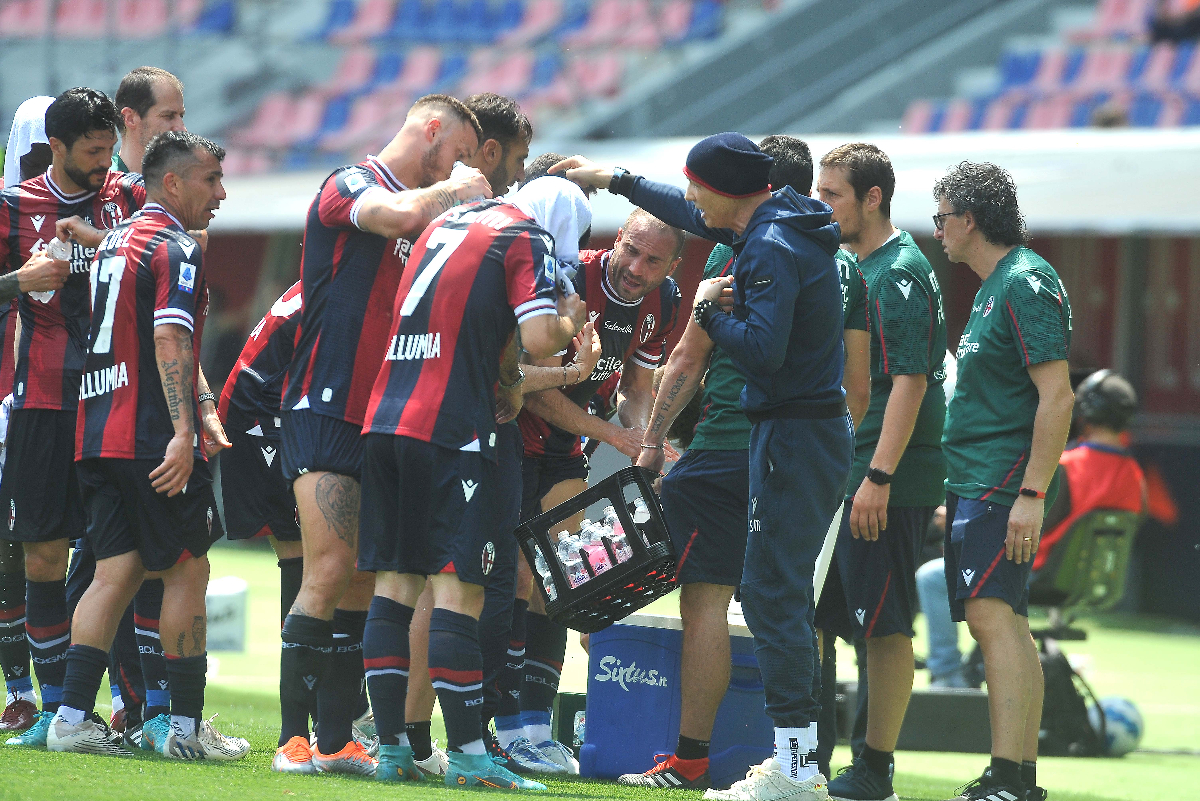Battling Leukemia
- Serbian soccer legend Sinisa Mihajlovic passed away at 53 years old after a long battle with leukemia.
- Leukemia is a cancer of the early cells in bone marrow that grow into white blood cells. Problems arise when your body starts making too many of these cells. Because the new cells are abnormal and don't work like they should, they're of little help in protecting you against infections.
- There are different subtypes of leukemia. These are broken down based on the maturity of the white blood cells they affect, and the type of cells they start from.
- Mihajlovic battled acute leukemia, which happens when the cancer cells are immature and can't do their job.
Mihajlovic, who managed Bologna in Serie A while undergoing cancer treatment, underwent three cycles of chemotherapy and a bone marrow transplant after his 2019 diagnosis. However, in March of this year, he revealed his cancer returned and he was set to receive more treatment. He passed away on Dec. 16, 2022, ESPN reports.
Read More
“To prevent this from happening, I was advised to undertake a therapeutic path. This time I will not put in a slide tackle like I did two and a half years ago on an escaping opponent. I’ll get a head start.”
Following the news of his death, many fans and friends of Mihaklovic paid tribute to him on Twitter.
“You fought like a lion on the pitch and in life … you are and you will always be a winner,” Italian Prime Minister Giorgia Meloni tweeted.
FIFA President Gianni Infantino also spoke out in the wake of his death.
He wrote, “I am deeply saddened to learn of the passing of SiniÅ¡a Mihajlović, one of Serbia’s most celebrated footballers and coaches. On the pitch, his free-kicks embodied a passion and dedication for the beauty of the game that left a lasting impression on the world of sport and his death is a great loss to all of us.
“Our heartfelt condolences go out to his family and loved ones during this difficult time,” he concluded.
FIFA remembers Mihajlovic for scoring 10 goals for Yugoslavia/Serbia & Montenegro during his 12-year career with the national team. He later moved to Italy and played for for Roma, Sampdoria, Lazio and Inter Milan in Serie A between 1992 and 2006.

What is Leukemia?
Leukemia is a cancer of the early cells in bone marrow that grow into white blood cells. Problems arise when your body starts making too many of these cells. Because the new cells are abnormal and don't work like they should, they're of little help in protecting you against infections.
There are different subtypes of leukemia. These are broken down based on the maturity of the white blood cells they affect, and the type of cells they start from.
Related: Blood Cancer is Different From Other CancersSome Treatments Are, Too
- Acute myeloid leukemia (AML)
- Chronic myeloid leukemia (CML)
- Acute lymphocytic leukemia (ALL)
- Chronic lymphocytic leukemia (CLL)
Dr. Nina Shah Explains How Blood Cancer Is Different Than Other Cancers
Acute leukemia happens when the cancer cells are immature and can't do their job. Chronic leukemia is when most of the abnormal cells are mature, but they still don't work as well as healthy white blood cells. Myeloid leukemias start in myeloid cells, the type of cells that become white blood cells, red blood cells, or platelets. Lymphocytic leukemias start from the cells that produce lymphocytes.
Since there are different subtypes within this cancer, it's important to consult your doctor and get the right diagnosis in order to make treatment decisions.
Symptoms of Relapse in Acute Myeloid Leukemia (AML)
In many cases, unfortunately, people will come back to their cancer doctor with similar symptoms they had at the time of original Acute Myeloid Leukemia (AML) diagnosis.
"AML when it grows in the bone marrow, it crowds out the good guys," says Dr. Tara Lin, director of the Acute Leukemia Program, University of Kansas Medical Center.
Symptoms Of Relapse in Acute Myeloid Leukemia (AML)
The symptoms of a relapse may include:
- Increased fatigue including shortness of breath
- Increased bruising due to a low platelet count
- Anemia, due to a low blood count
- Infections, caused by the low number of normal white blood cells to help fight them off.
AML patients who are in remission are carefully monitored to catch a relapse before it causes symptoms, Dr. Lin says.
"If I have a patient with AML who's in remission, I will follow their blood counts really closely,” she explains. “And if I see a drop in any of those normal counts, I will be prompted to get a bone-marrow biopsy in order to look for disease relapse, earlier rather than later, before the patient is developing symptoms."
Treatment Options For When Acute Myeloid Leukemia (AML) Returns
For patients whose acute myeloid leukemia (AML) has returned, there are an increasing number of treatment options still available, says Dr. Raoul Tibes, formerly the Director of the Clinical Leukemia Program at NYU Langone Health.
Dr. Tibes explains that treatment options after relapse are often determined by when the disease recurs after initial remission. Patients who were in remission for a year or more and experience a reoccurrence are often put back on initial treatment and undergo a stem cell transplant, if possible. For patients whose remission lasts less than a year, physicians will look for targeted therapies in order to determine molecular and genetic factors in the leukemia cells.
How To Treat Acute Myeloid Leukemia (AML) When It Returns
"We look for genetic and genomic changes in our leukemia patients that relapse," Dr. Tibes tells SurvivorNet. "Often we can compare them to their initial diagnosis and now we have a couple of medications available and we try to find medication that is specific for that molecular abnormality in leukemia cells."
IDH1 and IDH2 Inhibitors
Dr. Tibes is excited about IDH1 and IDH2 Inhibitors, which are medications receiving approval by the Food and Drug Administration (FDA) because of successful response rates for relapsed AML. However, Dr. Tibes says that the overall amount of medication for AML treatment is still too small.
"The challenge is that we in a way know more about the genes and the molecular makeup of leukemia cells than we have medication and drugs available," according to Dr. Tibes. "So despite the approval of several medications from the FDA for AML over the past couple of years, we still have a long way to go."
Stem Cell Transplants During Relapses In Acute Myeloid Leukemia (AML)
AML will usually go into remission after initial treatment. However, if AML returns then physicians will consider a stem cell transplant (SCT), also known as a bone marrow transplant, which allows an extremely high dose of cancer-killing chemotherapy to be given. Following the transplant, patients are given stem cell infusions to restore bone marrow. However, physicians must decide if a person is eligible for the procedure.
"What does eligible mean? It means you're pretty healthy, your heart works okay, your lungs work okay… Doctors like to make sure a person can walk, can do the normal days activities, before saying a patient is healthy enough to go for a transplant," Dr. Nina Shah, who treats blood cancer at The University of California, San Francisco (UCSF).
The most common form of stem cell transplant to treat AML is an allogeneic stem cell transplant, where the stem cells come from a donor whose tissue type matches the patient's. Transplant cells can come from donors who are family members, unrelated donors, or from chord blood.
Contributing: SurvivorNet Staff
Learn more about SurvivorNet's rigorous medical review process.


